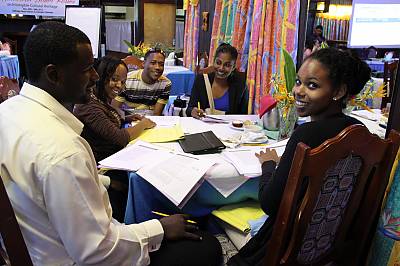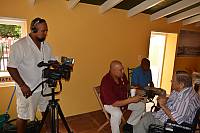
UNESCO has developed a comprehensive set of capacity-building materials comprising more than 50 thematic training units. Initially elaborated in English, translations are available in French, Spanish, Arabic, Russian and Portuguese.
The materials are publicly available online in several languages by registering as a user on our materials repository. UNESCO encourages users to customize the materials to the needs of the local country context.
Key themes
Implementing the Convention at the national level (Units 1-15)
The materials on implementing the Convention at the national level are the backbone of all capacity-building activities as they spell out the basic concepts, measures and mechanisms of the Convention.
These materials provide an overview of the objectives and key safeguarding concepts of the Convention and the national obligations of States Parties and the mechanisms for international cooperation.
Ratification (Units 16-17)
The ratification materials target those countries not yet party to the Convention. They clarify the reasons why the Convention should be ratified, detail processes and mechanisms for successful ratification, provide guidance in solving problems in ratifying the Convention and explain the importance of integrating measures for safeguarding intangible cultural heritage in legal or policy reform.

© Franklin Dominico Antoin (FUHIKUBO: 2014)
Community-based inventorying (Units 18-37)
These materials cover an introduction to community-based inventorying; an inventorying framework; issues of ethics and responsibilities; information generation methods and techniques; and putting community-based inventorying into practice.
Preparing nominations to the Lists of the Convention (Units 39-44)
These materials give an overview of the processes for preparing nominations to the Urgent Safeguarding List and the Representative List. They also include practical sessions that aim to help beneficiary States understand how to prepare a complete nomination.
Developing safeguarding plans (Units 45-47)
These materials cover knowledge required for developing safeguarding plans, including a ‘Step-by-step guide.’ The workshop offers three different scenarios that can be used to improve competencies needed for developing safeguarding plans, which facilitators can choose to use either as an interactive role-play game or as case studies for discussion.
Gender and intangible cultural heritage (Units 48-49)
Two units focus on the interactions that exist between gender and the creation, practice, enactment, transmission and safeguarding of intangible cultural heritage. They build the practical knowledge to apply a gender-responsive approach to analyzing and developing safeguarding plans, programmes and policies.
Preparing international assistance requests (Units 50-54)
These materials aim to strengthen the necessary analytical and conceptual skills to prepare requests for International Assistance. They follow a similar pedagogical approach to the materials on nominations by providing practical guidance on how to prepare a sample International Assistance request.
Resources on policy development (Unit 55)
These materials seek to assist country counterparts in planning a strategy for developing ICH-related policy to assist in the implementation of the Convention at the national level. They include a set of tools and materials, such as case studies, PowerPoint presentations and handouts.